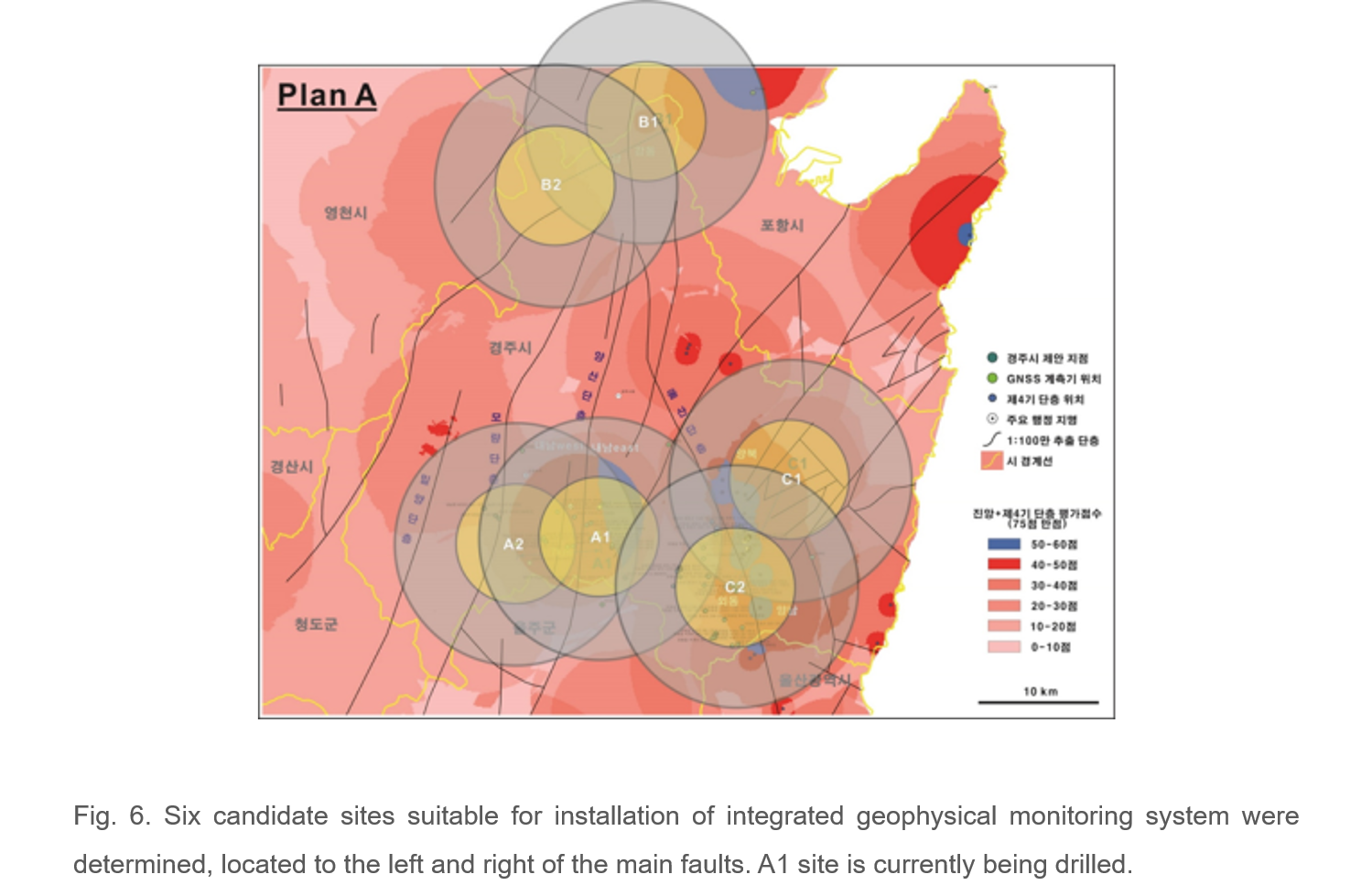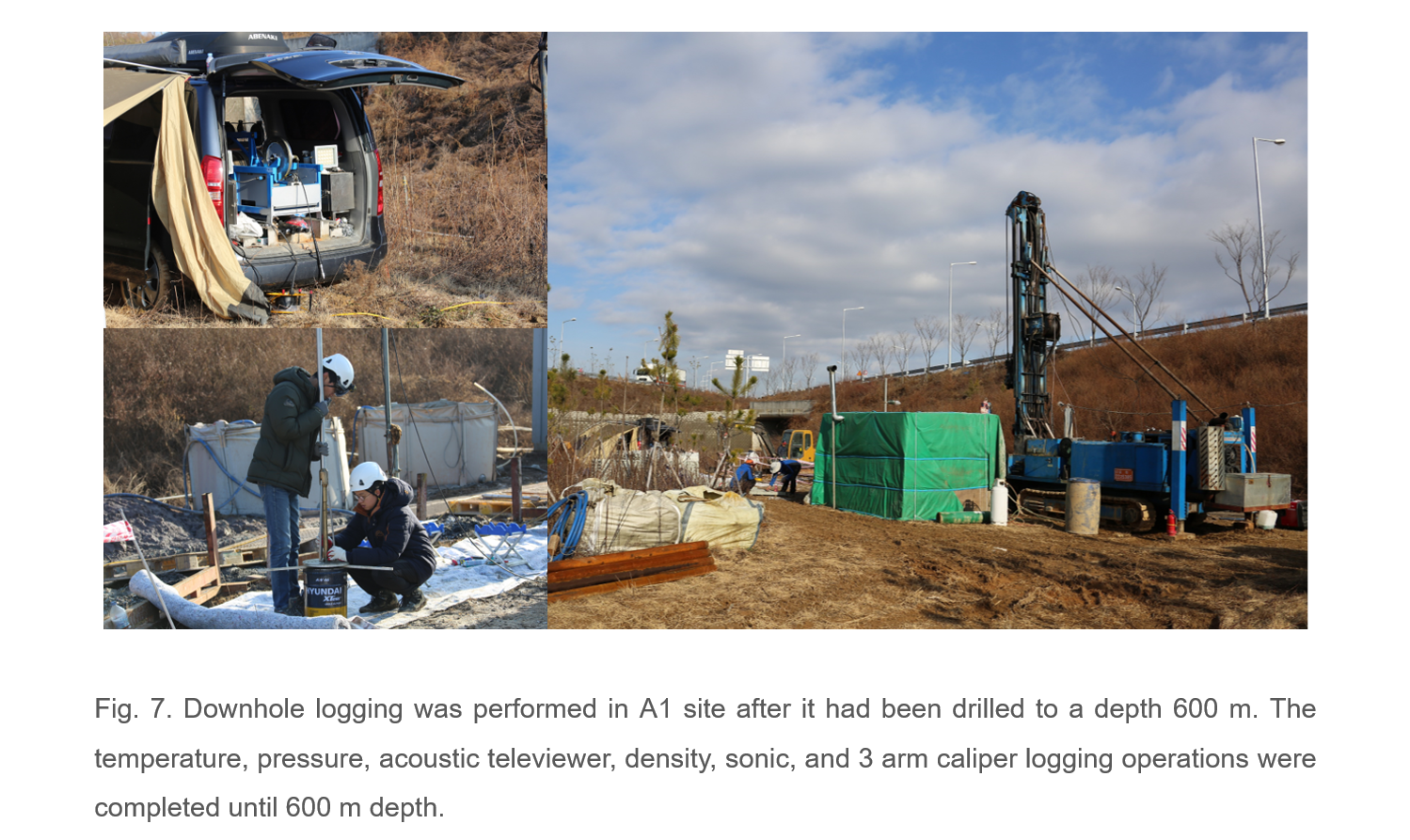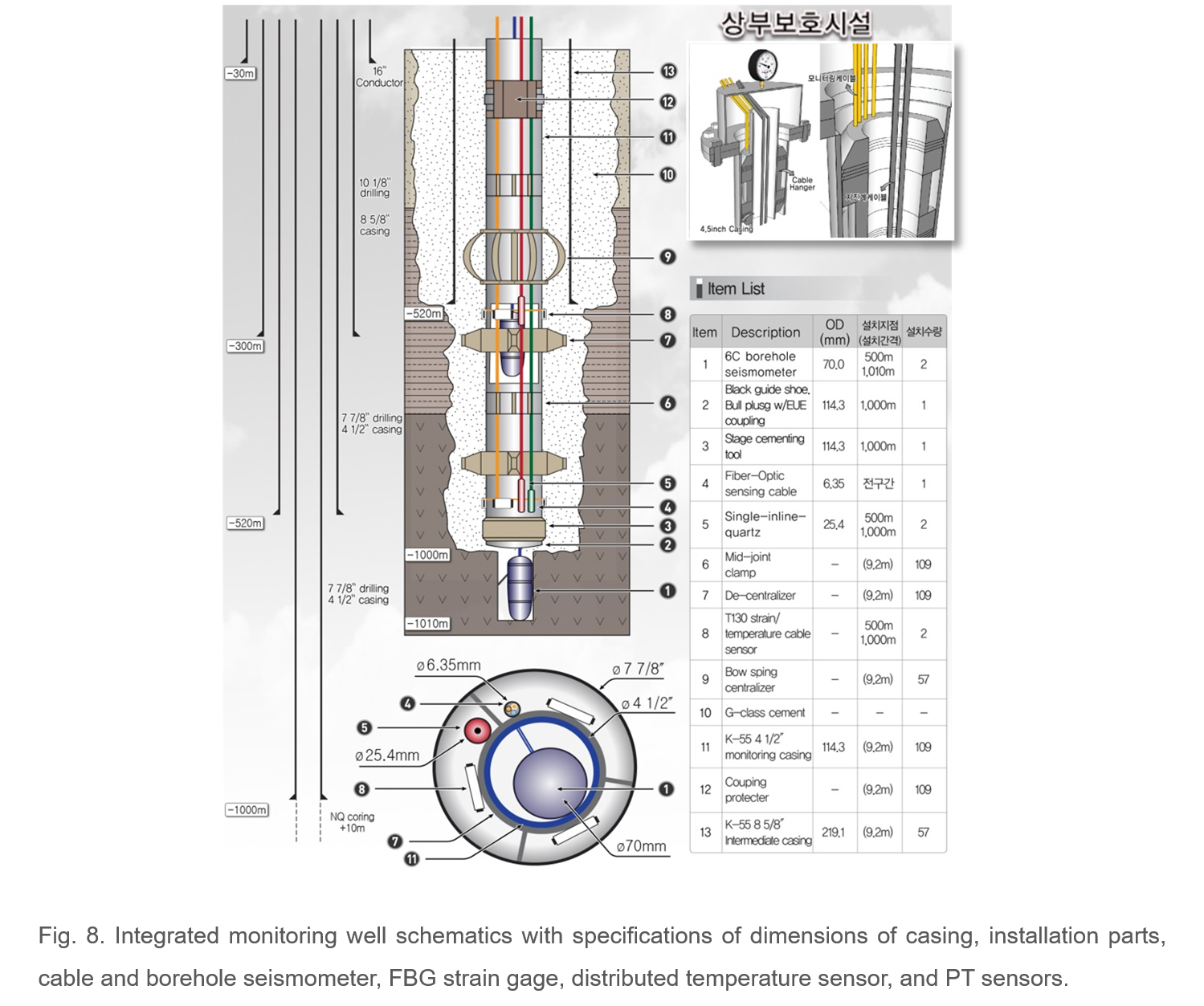
The importance of the development and utilization of deep underground space is increasingly recognized, as promoted by geothermal energy, geological nuclear waste disposal, underground energy storage, and underground research laboratories. The deep underground environment is characterized by extreme conditions including high stress, high water pressure, and high temperature, as well as by limited accessibility, all of which cause many uncertainties in estimation and assessment of rock mass behavior at deep depth. Therefore, we have focused on the development of InDEPTH elementary technology for characterization of the deep subsurface based on boreholes (1-5 km, high temperature and high stress condition) (Fig. 1).
We developed the operation/complex analysis technology of a 5 km-geophysical logging system for high temperature and high pressure environments (Fig. 2). Besides this, we performed field verification and commercialization of the developed 3D in-situ stress measuring device (Fig. 3). Then, we developed and verified a new T-H-M coupled module for characterization of deep subsurface areas (Fig. 4).
Contact: Hangbok Lee (leehb@kigam.re.kr)
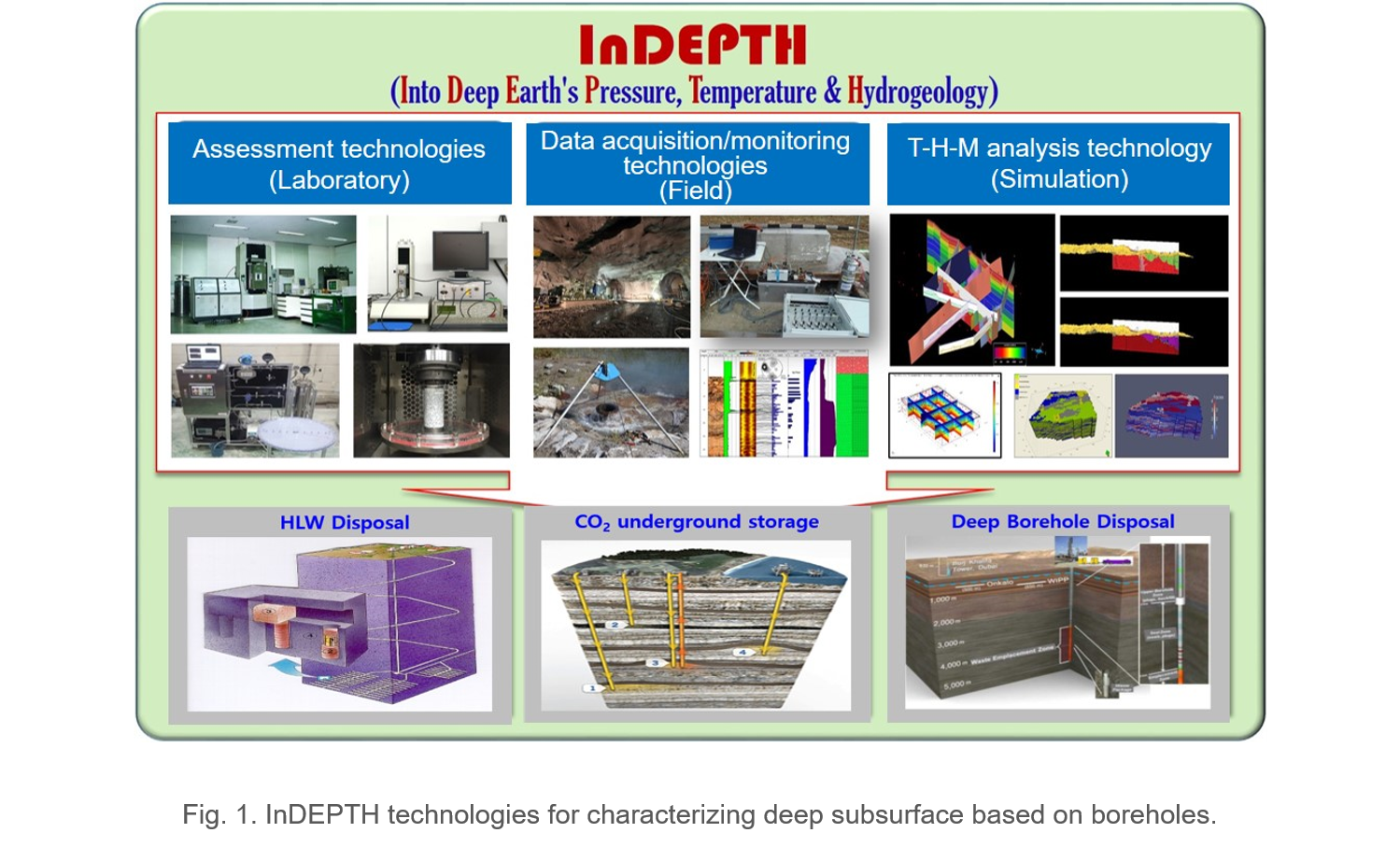
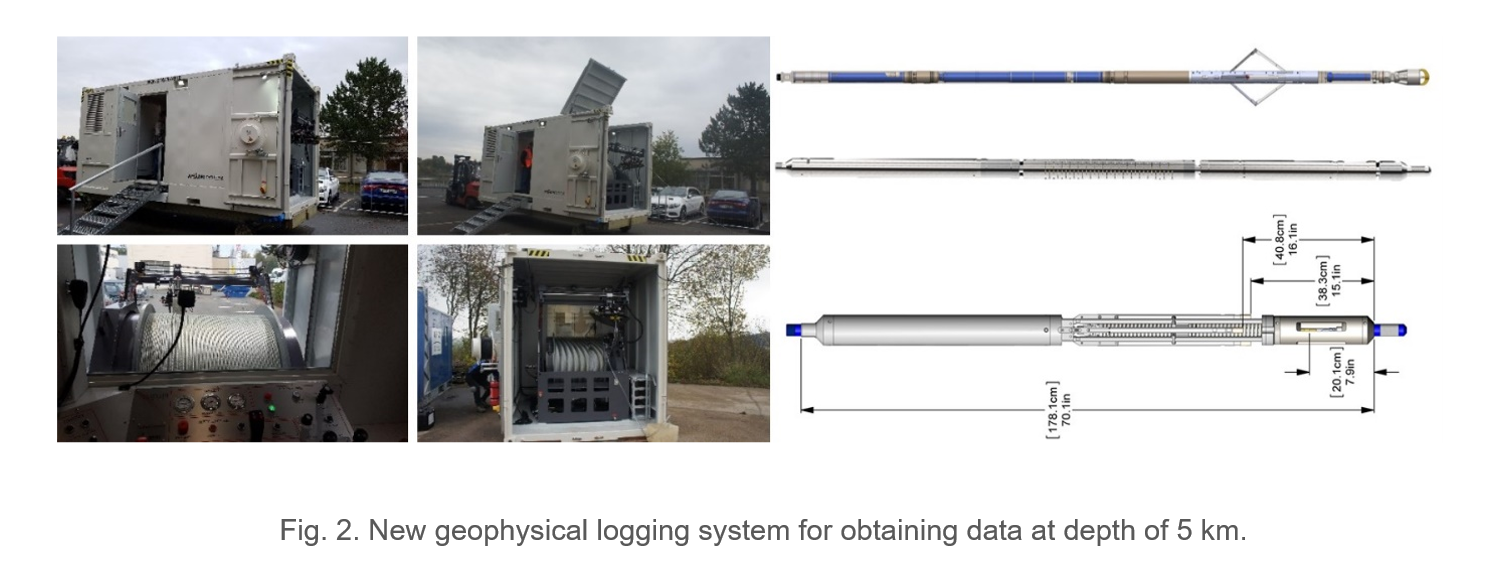
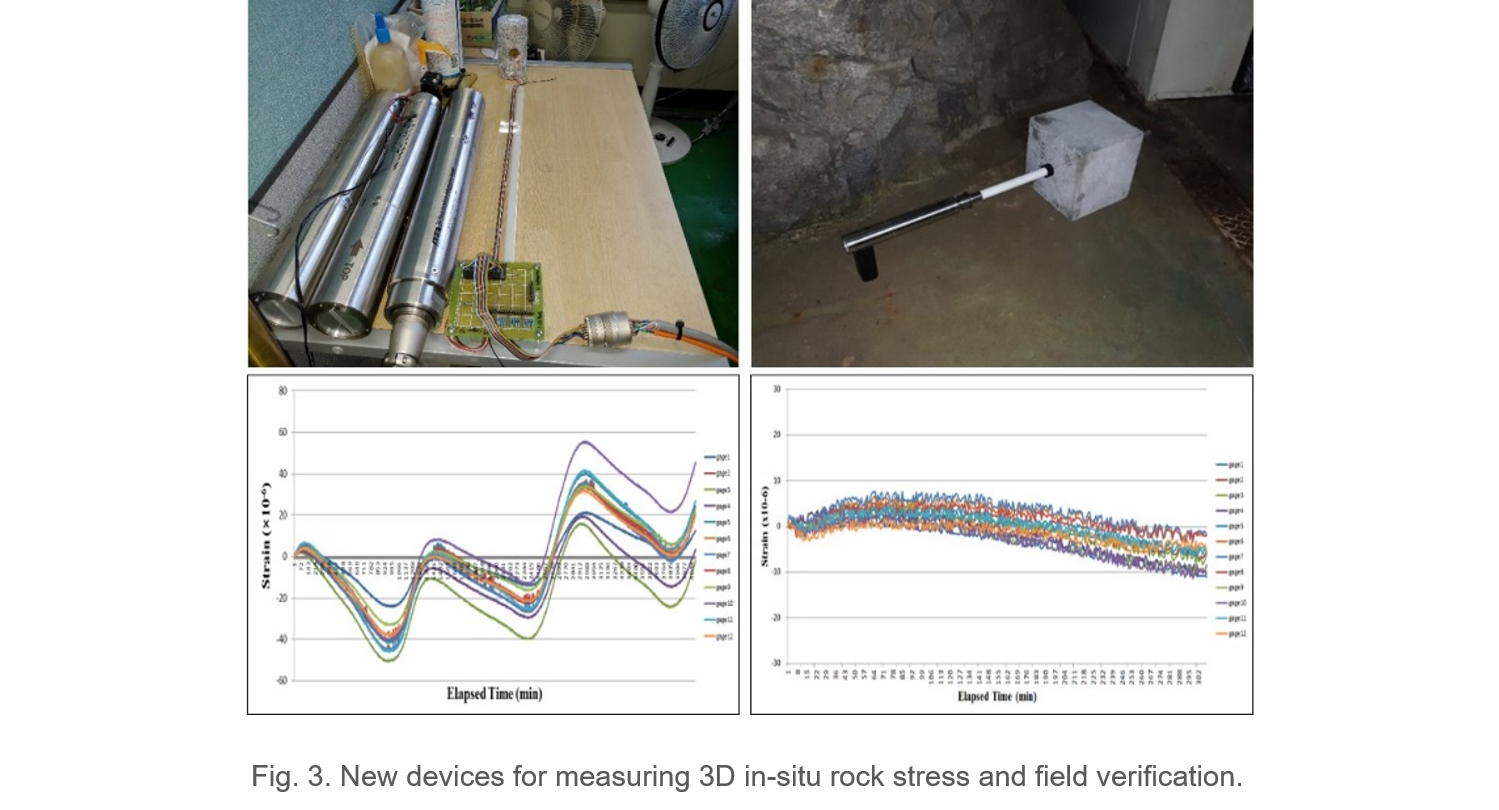
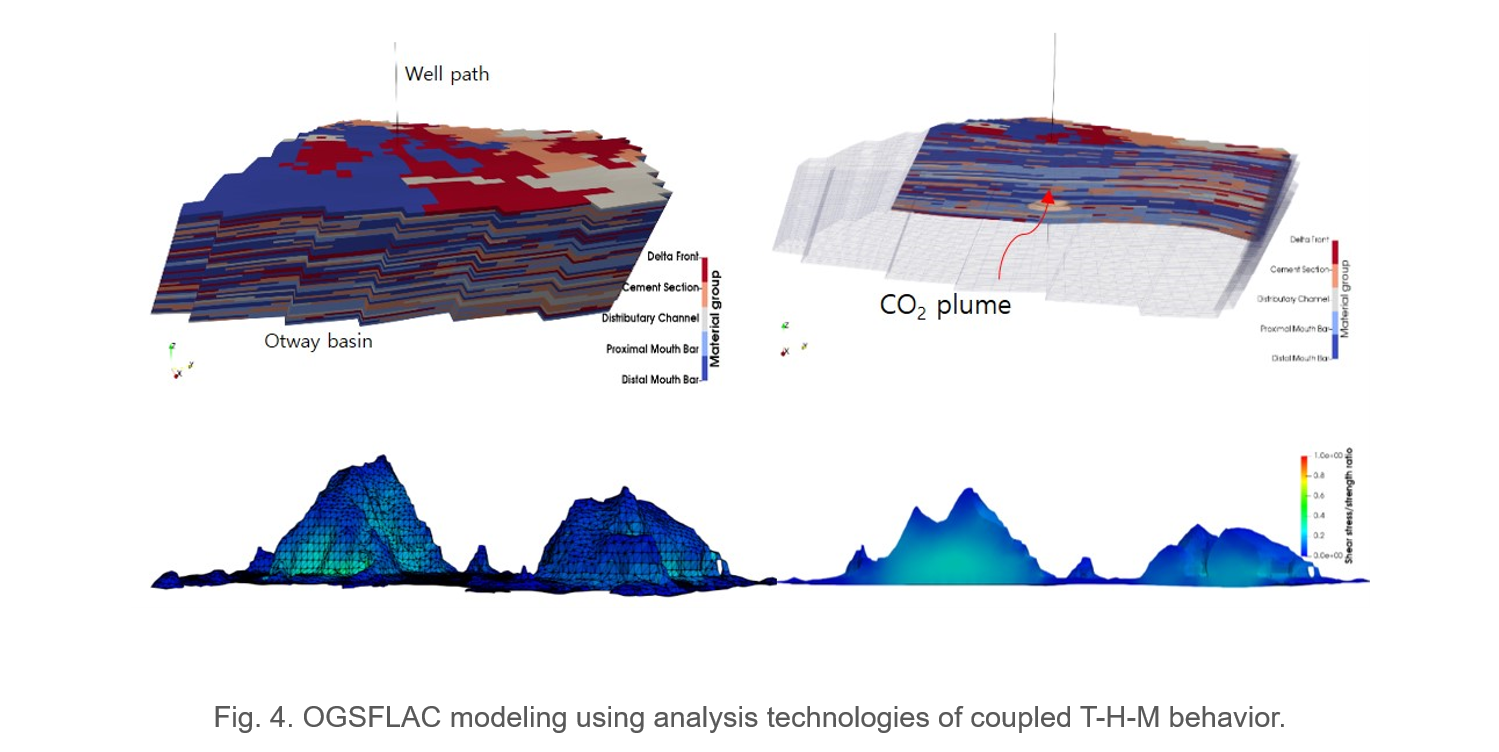
In the event of a major earthquake, or if cavities form or ground subsidence occurs in the vicinity of a structure, the foundations of the structure may be affected. However, as it is difficult to access underground spaces, it is difficult to estimate the degree of damage sustained. We developed Foundation Damage Monitoring System (F-DAMS) to solve this critical issue. First, we established a monitoring system using multiple acoustic emission sensors installed at a mat foundation, data acquisition system, and software including optimized techniques for damage location. We developed a foundation (pile) failure depth estimation device. We tested the feasibility of the monitoring system through lab- and field-scale tests, and shaking table tests. The monitoring system provides quantitative data on structural damages caused by geotechnical activity; data can be used in assessment process for the rehabilitation and repair of structures. The system can serve as a daily safety monitoring device as it is able to detect crack initiation and growth in structures.
Contact: Hyunwoo Kim (hyunwoo.kim@kigam.re.kr)
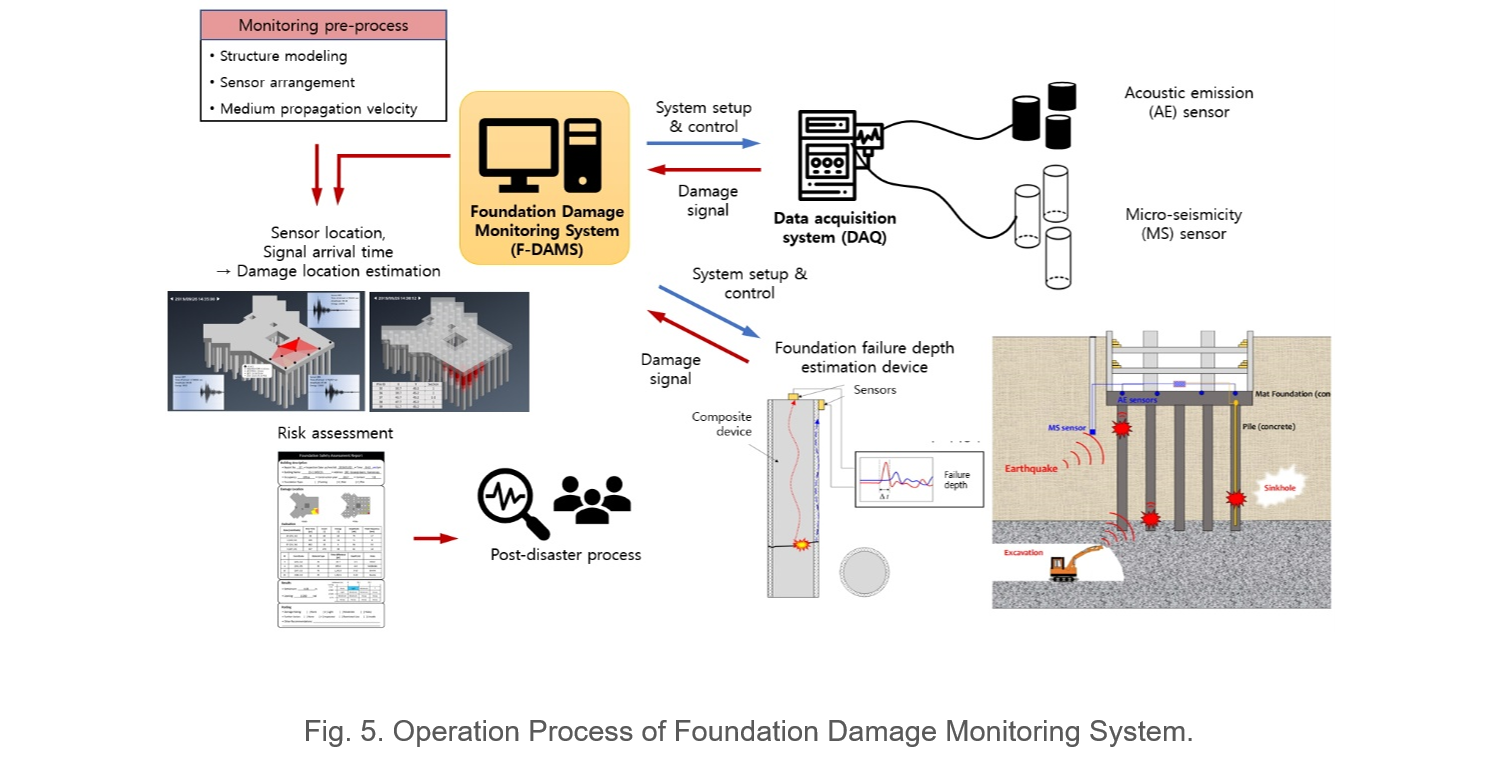
Another important study (TELLUS) is to establish six integrated geophysical deep borehole monitoring systems to assess earthquake and to monitor fault activity in southeast Korea. One monitoring system site is in Naenam-myeon (Fig. 6, 7) and is currently being drilled; the design for the drilling and sensor installation have been updated (Fig. 8). Also, we decided on the sensors for each monitoring item and the metadata prototype configuration; database design for observed data was completed.
Contact: Myungsun Kim (mskim@kigma.re.kr)
